BENDING-ACTIVE SEGMENTED SHELLS
Master Thesis, M.Sc. ITECH, University of Stuttgart
This research presents a new structural system that combines the benefits of segmented shells and active bending. Initially planar plate elements are bent only by support displacements and then connected to form shell structures. This advantageous procedure allows building continuous freeform surfaces from single-curved, developable elements with a very simple and economic construction process, while achieving the structural efficiency of a shell. An innovative form finding approach is presented: an explicit variation of the bending stiffness along a segment allows manipulating its spatial, actively bent shape to closely approximate a designed target shell geometry. The accuracy of this process and the structural behaviour of the shell under external loads and in different scales is studied.

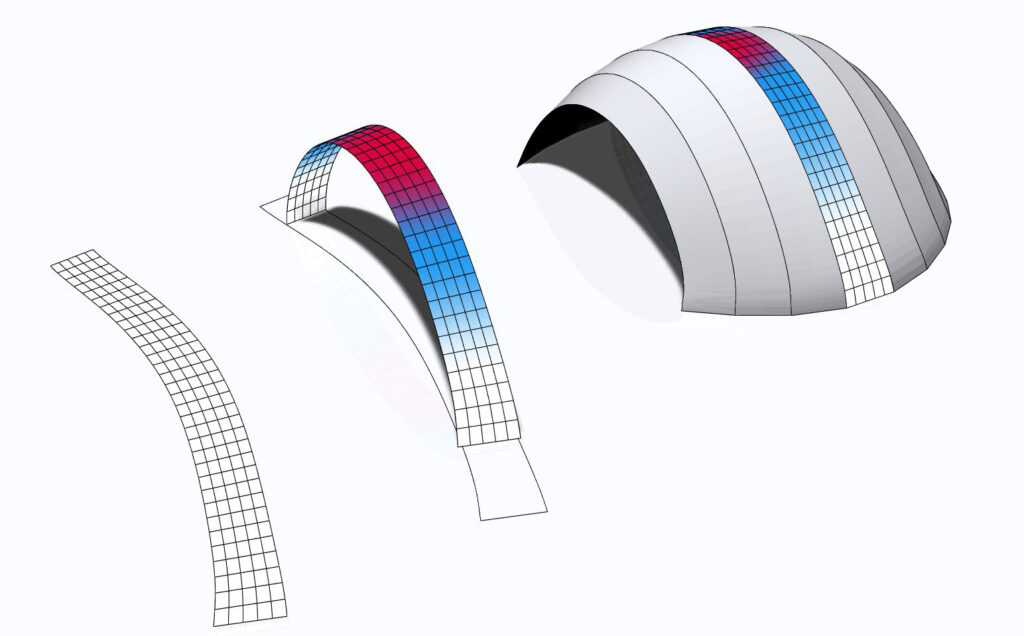
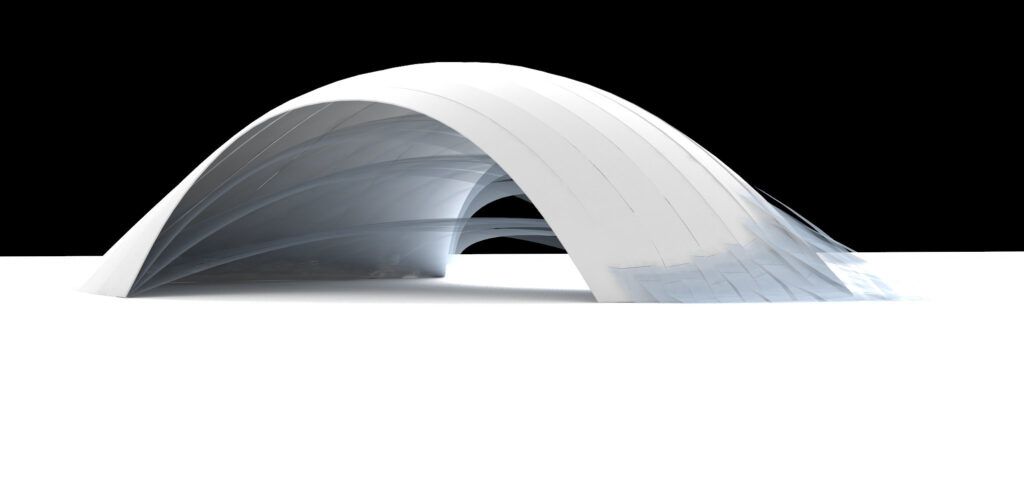
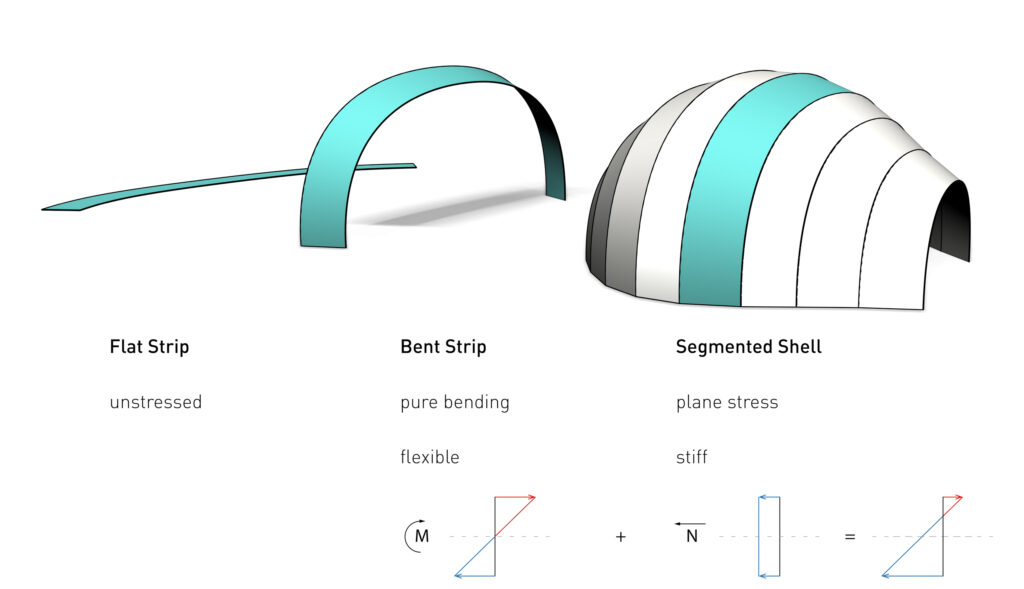

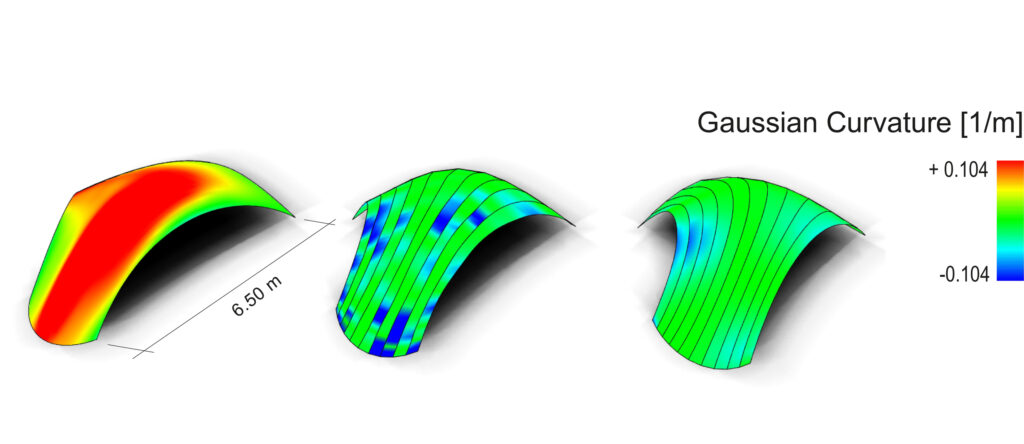
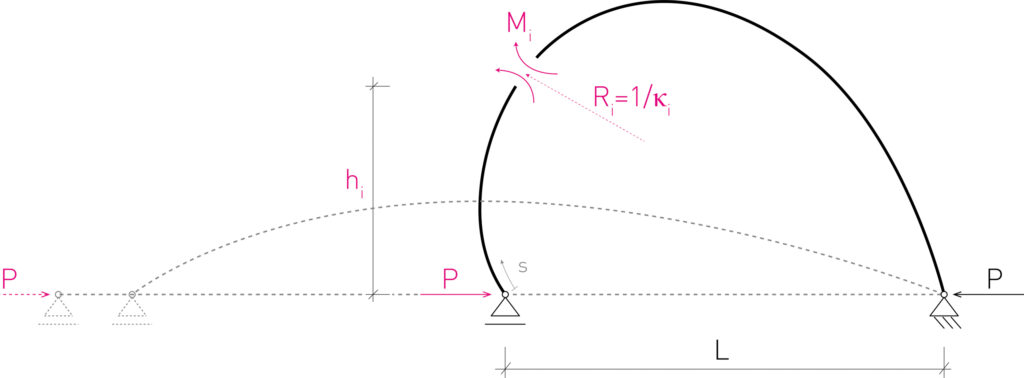
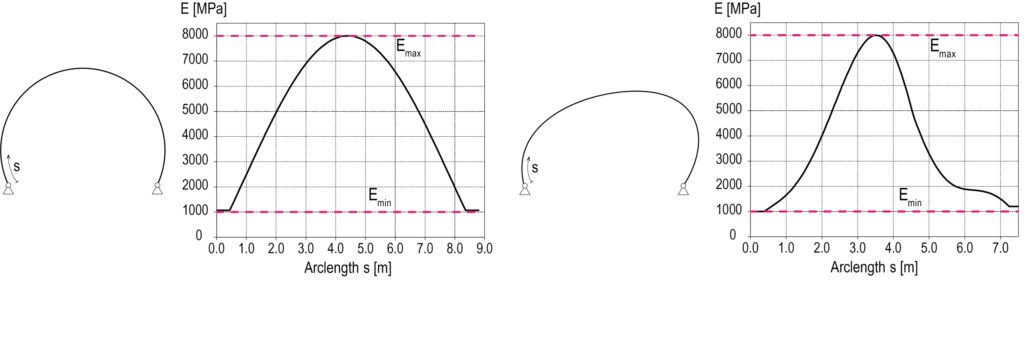
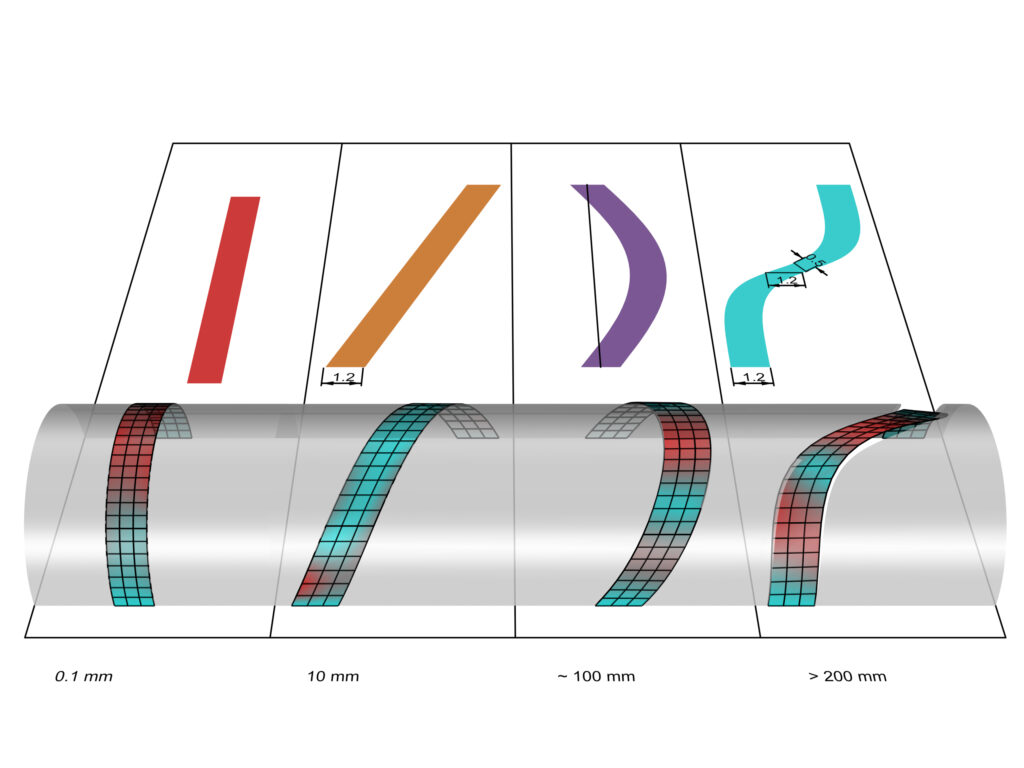
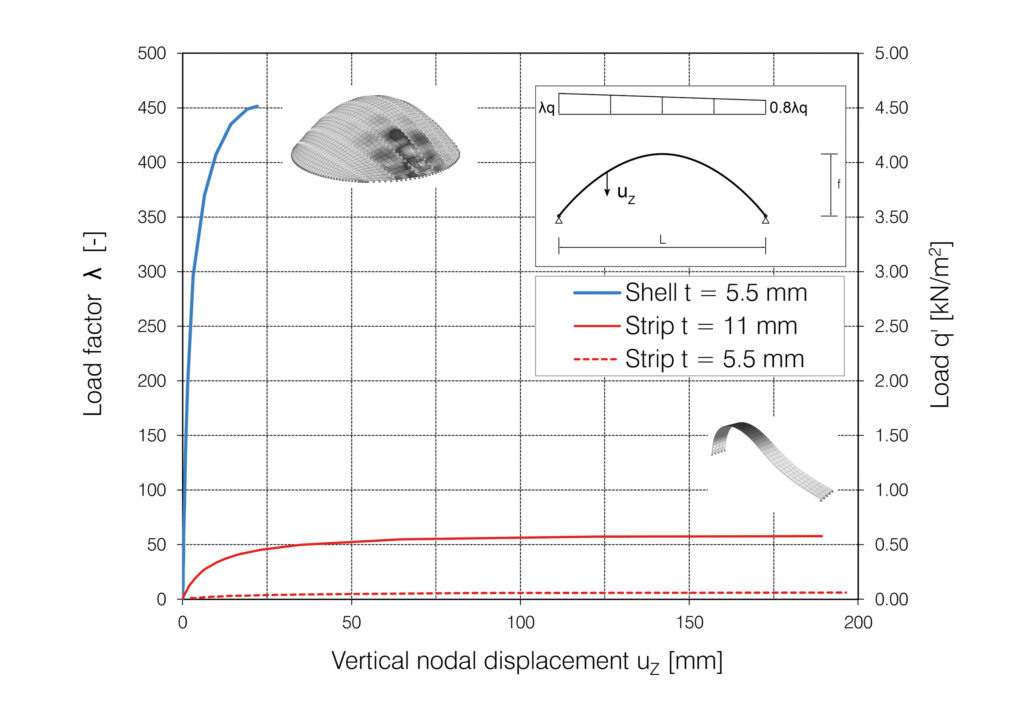
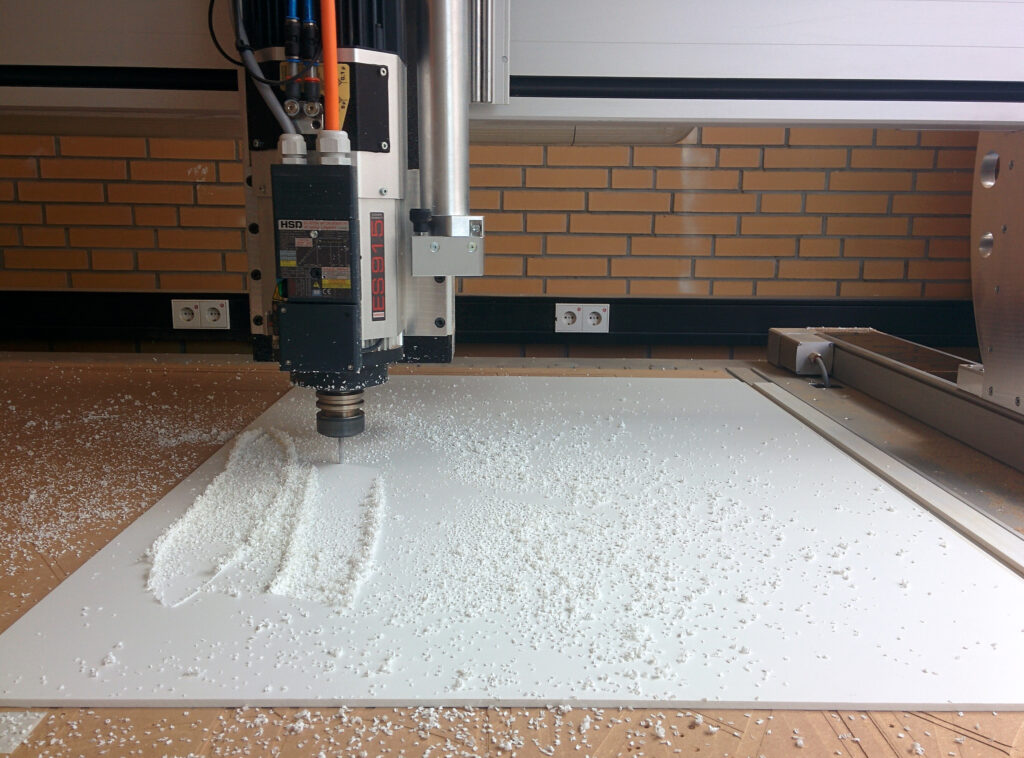
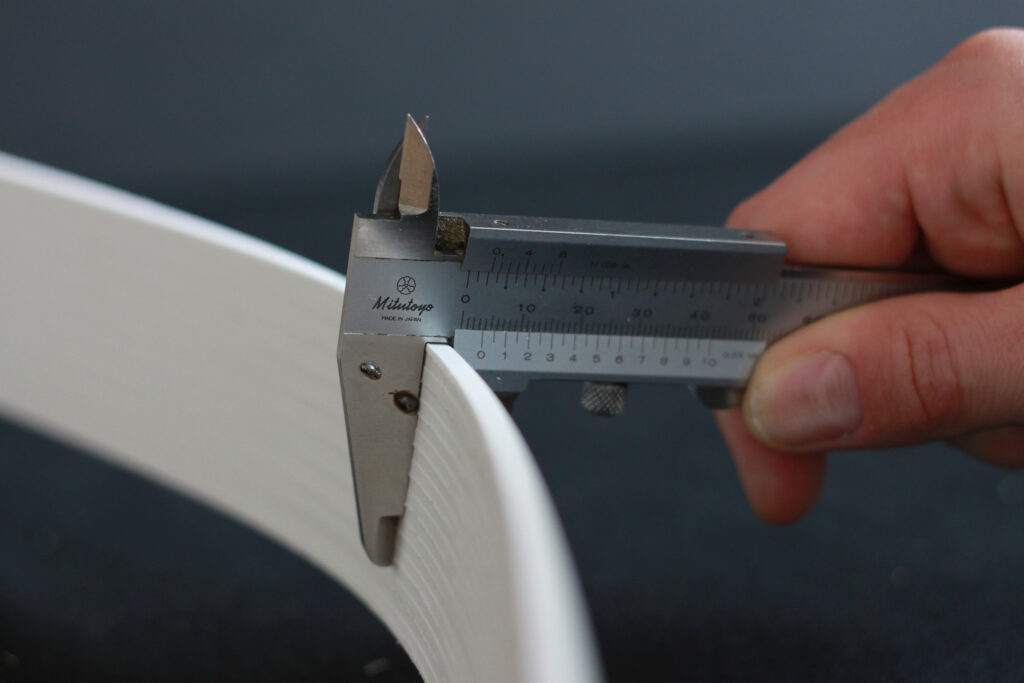
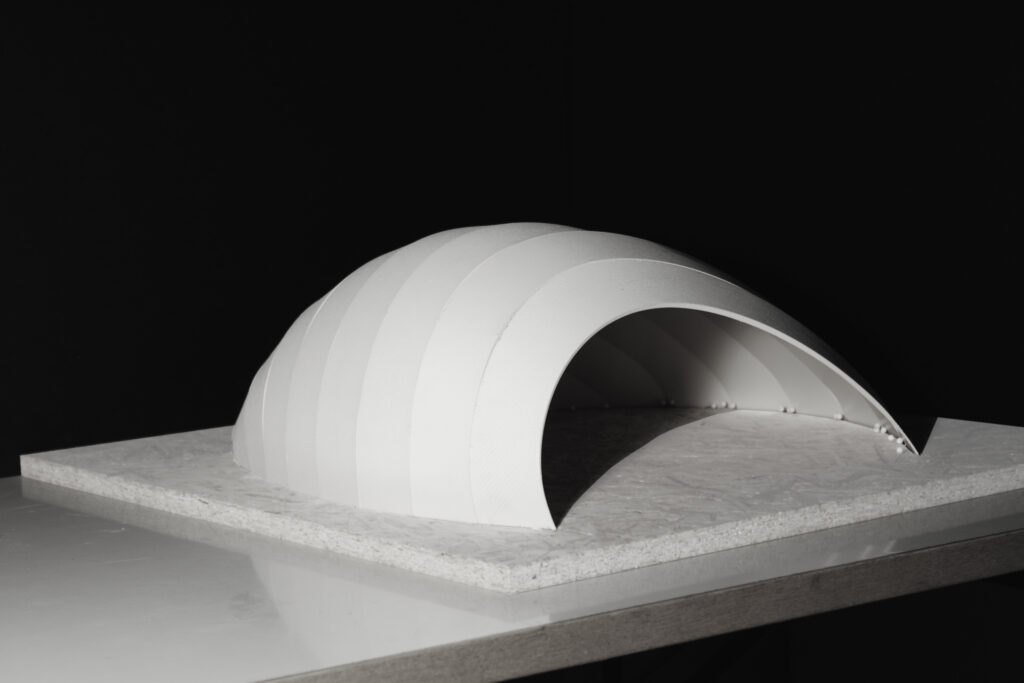
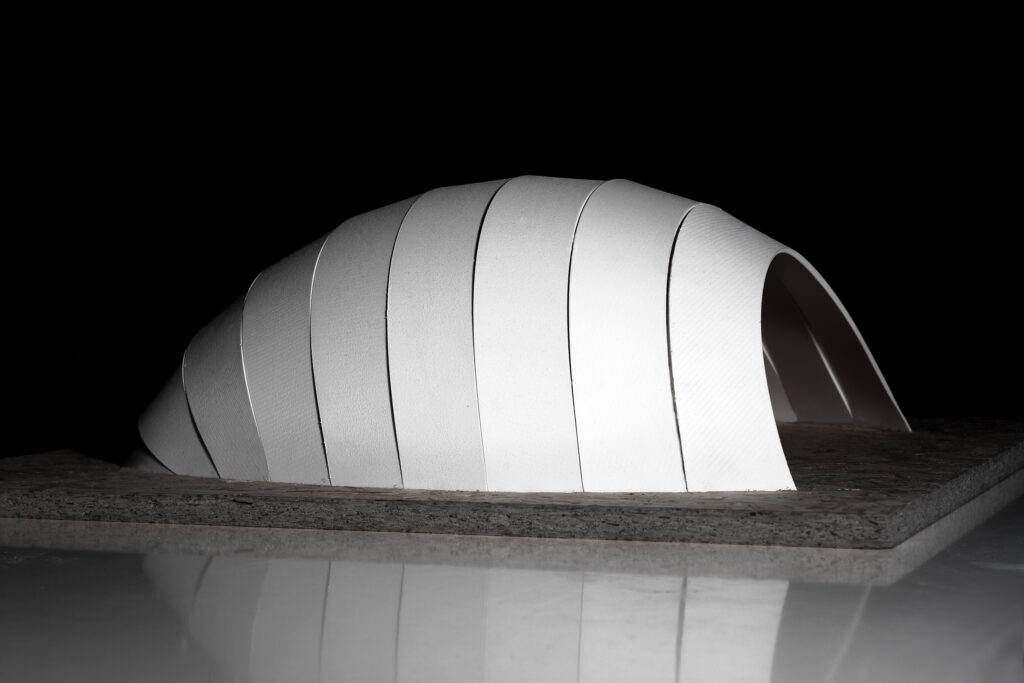
Stiffness gradients
For statically determinate systems, it is possible to calculate the internal forces at any point of a structure from the system’s geometry and the applied loads alone, independently of stiffnesses of individual members. In some cases, this correlation is reversible and one can design a curved, statically determinate system and derive the necessary bending stiffness for a given loadcase to achieve exactly the designed shape (curvature κ) after a large elastic bending deformation.
EI = M/κ = P·h/κ
For a statically determinate bending-active arch with one pinned and one roller support (see Fig) the bending moment M at any point along the curve can be calculated directly from the actuation force P and the lever arm h. This allows deriving an exact stiffness gradient to bend the member into the designed geometry. For bending-active shell segments the method is expanded to 2D plate elements by evaluating the principle curvature and the width of the developable strips.
EXPERIENCE
Computational Design Workflow
- Custom implementation of a Desing to Fabrication tool
- Data exchange Rhino ↔ Sofistik through C#
Structural Analysis
- 3D geometrically nonlinear FE simulation of the bending process (large deformations)
- Detail analysis of anisotropic plywood with custom buildup
- Shell buckling limit analysis
RELATED PUBLICATION
Conference Paper
Bending-Active Segmented Shells
Jan Brütting, Axel Körner, Daniel Sonntag, Jan Knippers
Annual Symposium of the International Association of Shell and Spatial Structures, Hamburg, 2017
Full Text PDF
